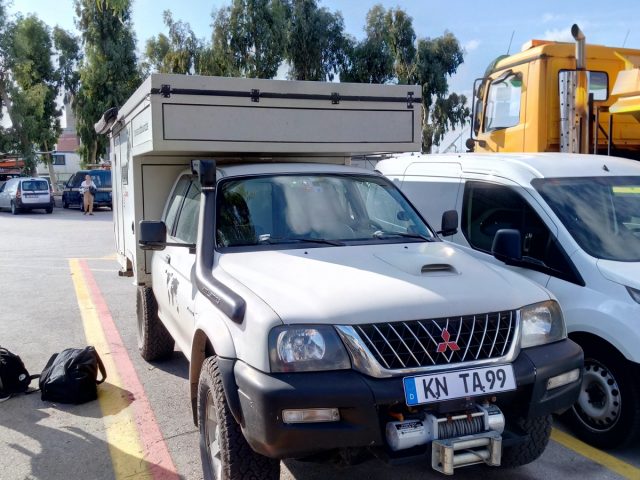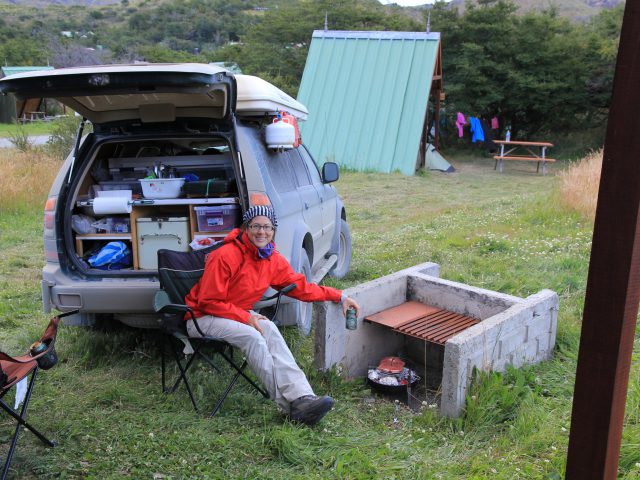When shipping a car from Colon / Panama to Cartagena / Colombia you will have to face some bureaucracy in the port and at the customs office. To give you an idea about how it works and in order to help other travellers you can below find an email I wrote to one of our fellow travellers:

Regarding tips for the port in Cartagena: I am not sure which carrier you are working with. We used Seaboard with Tea Kalmbach as agent on the Panama side.
It worked for us as followes:
1. Go to your carrier’s office (e.g. Seabaord) to get your original bill of Lading. This can be done as soon as the ship is in harbour, even before unloading.
2. Go to DIAN (Customs) with Passport, car title, bill of lading. Make sure to have at least one fotocopy of each document with you (passport foto page and stamp page!). Here you will hand over the set of documents which will be the basis for your import permit and you will make an appointment with a DIAN inspector at the port in order to check the car. This will usually be the next morning at 8 am or afternoon around 2 pm. Ask for the inspectors name. This will make things easier.
3. Go to the port a bit ahead of time before the inspection and register there. Before entering the port you have to hand over an ID document. Make sure to have drivers licence or ID card ready. Talk to the offical (document center) that you have an appointment with the inspector and that you would like to unload the container. Maybe you will have to fill out some forms. Before entering the port you need a warning vests, closed shoes and long pants. Someone will give you a helmet. I was told before I would need a proof of health insurance but nobody asked for it.
4. In the port area go to the area where the container is parked. Have your original bill of lading with you and ask the foreman to open the container for unloading prior to inspection. *If it is Seaboard, the container will be a the end of the white halls that could be seen lefthand side when entering the port. As a lot of construction is going on, you will have to go through these halls / warehouses*.
5. Unload car and wait for inspector to check the car. The check will be a matter of minutes and not very in detail (numbers will be checked).
6. After the inspection is done ask the inspector if he will go directly back to DIAN. Go to the port management again and pay port fee (around 300.000 Peso). Then go to DIAN and look our for the inspector / ask for him. He will fill out your import permit.
7. Go back to port and give permit to the officials there. You will receive a set of three documents that will allow you to leave the port with the car. Go to the car (still parked beside the container) and give the documents to the foreman. He will stamp it and you are ready to go. Leave the port and go back to the port management / document center ot give back the helmet and deregister.
8. Don’t forget to buy a compulsory insurance for the car somewhere in the city.
TIPS:
1. Remember where the locations are! The procedure itself is not difficult but you will have to go from one place to the other (With Evergreen logistics it is supposed to be a bit less difficult). With seaboard the port is at “Muelle El Bosque” – This you can tell the taxis. Bosque is a long wide road and the port entry comes around 200m behind a gas station (see attached map). DIAN (in Manga) the taxis should know.
2. Take Moto-Taxis if you like the real adventure ;). They are way faster and more cheep than car taxis. Form Getsemani (Hostel area) to Muelle El Bosque it should cost 3.000 Peso per person. From there to DIAN and vice versa 2.000 Peso.
We needed to make a new appointment with the inspector and in total it took around 10 crazy Moto-Taxi rides and 1,5 days to get the car out.
Travel safely, Armin



